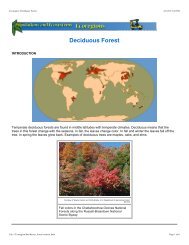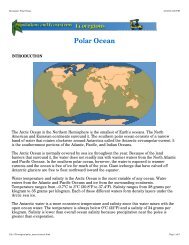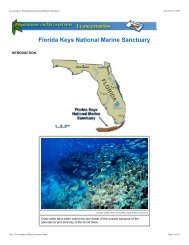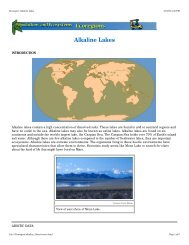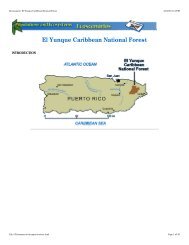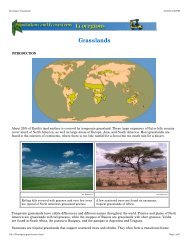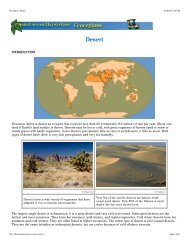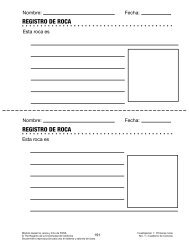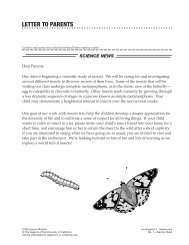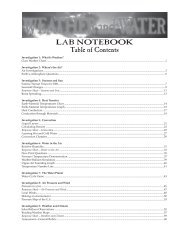Ecoscenarios Combined - FOSSweb
Ecoscenarios Combined - FOSSweb
Ecoscenarios Combined - FOSSweb
Create successful ePaper yourself
Turn your PDF publications into a flip-book with our unique Google optimized e-Paper software.
Ecoscenario: Delaware Water Gap National Recrational Area<br />
4/16/03 3:11 PM<br />
Courtesy of the National Park Service<br />
Tree diversity in the hemlock forests at the Delaware<br />
Water Gap National Recreation Area.<br />
Courtesy of the National Park Service<br />
Plant diversity in the hemlock forests at the<br />
Delaware Water Gap National Recreation Area.<br />
The surface of a summer pond might be covered in small insects, mayflies, each only 2.5 centimeters (1.0 inches)<br />
or less in length. Mayflies spend most of their lives as nymphs, clinging to underwater plants and eating algae and<br />
detritus. When they molt and emerge as adults, they live only a few hours or days. The mayflies floating on the<br />
water are the adults that have already mated and laid their eggs.<br />
A closer look at the water and at the rocks in it reveals a film of blue-green algae. These cyanobacteria are<br />
important producers in a freshwater ecosystem. Blue-green algae are very sensitive to changes in water nutrient<br />
levels. For instance, an increase in nitrogen can cause algae to grow rapidly. This is called an algal bloom. When<br />
the massive population of algae dies, the decomposition process can consume all the oxygen in the water. Such<br />
blooms decrease the amount of oxygen available to other organisms in the water.<br />
Howard Evans, Gillette Entomology Club at<br />
Colorado State University<br />
An adult mayfly rests on a plant stem.<br />
The rocks, vegetation, and mud of the stream bottom are covered with organisms. Tiny crustaceans called scuds,<br />
only 5–20 mm (0.2–0.8 inches) long, swim through the vegetation. Aquatic snails scrape algae off submerged plant<br />
stems and rocks. Freshwater mussels live in the muddy stream bottom, and get their food by siphoning water and<br />
file:///Ecoscenario/delgap/content.html<br />
Page 6 of 14



